Torsten Kilias
IDEL: In-Database Entity Linking with Neural Embeddings
Mar 13, 2018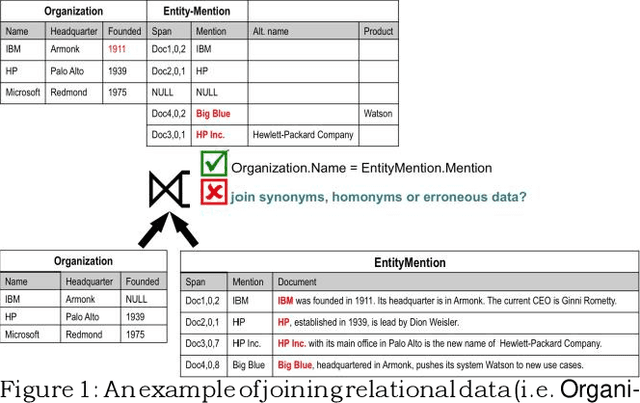

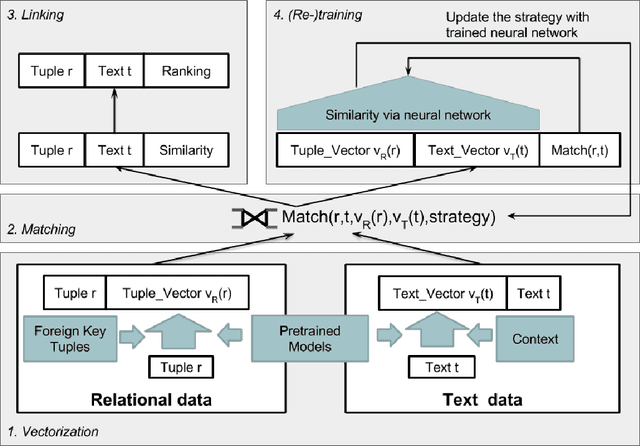

Abstract:We present a novel architecture, In-Database Entity Linking (IDEL), in which we integrate the analytics-optimized RDBMS MonetDB with neural text mining abilities. Our system design abstracts core tasks of most neural entity linking systems for MonetDB. To the best of our knowledge, this is the first defacto implemented system integrating entity-linking in a database. We leverage the ability of MonetDB to support in-database-analytics with user defined functions (UDFs) implemented in Python. These functions call machine learning libraries for neural text mining, such as TensorFlow. The system achieves zero cost for data shipping and transformation by utilizing MonetDB's ability to embed Python processes in the database kernel and exchange data in NumPy arrays. IDEL represents text and relational data in a joint vector space with neural embeddings and can compensate errors with ambiguous entity representations. For detecting matching entities, we propose a novel similarity function based on joint neural embeddings which are learned via minimizing pairwise contrastive ranking loss. This function utilizes a high dimensional index structures for fast retrieval of matching entities. Our first implementation and experiments using the WebNLG corpus show the effectiveness and the potentials of IDEL.
Robust Named Entity Recognition in Idiosyncratic Domains
Aug 24, 2016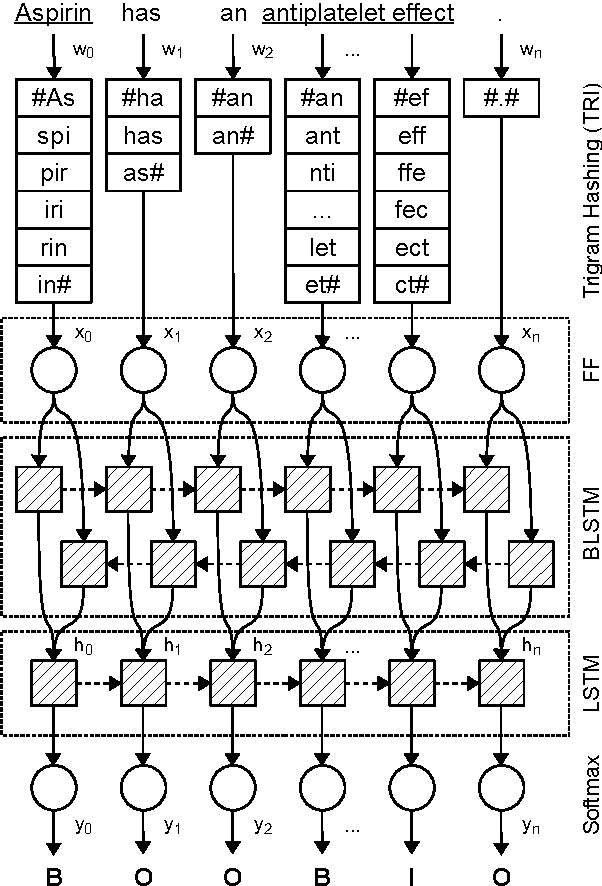
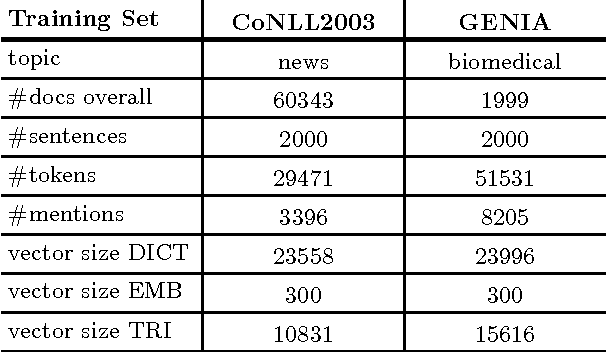
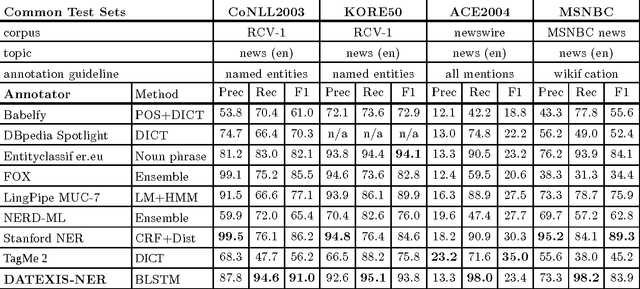
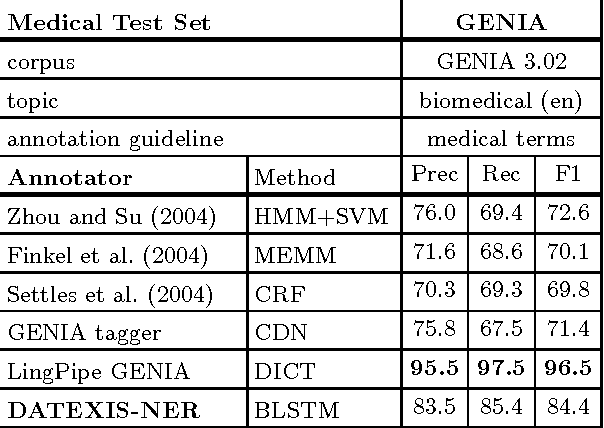
Abstract:Named entity recognition often fails in idiosyncratic domains. That causes a problem for depending tasks, such as entity linking and relation extraction. We propose a generic and robust approach for high-recall named entity recognition. Our approach is easy to train and offers strong generalization over diverse domain-specific language, such as news documents (e.g. Reuters) or biomedical text (e.g. Medline). Our approach is based on deep contextual sequence learning and utilizes stacked bidirectional LSTM networks. Our model is trained with only few hundred labeled sentences and does not rely on further external knowledge. We report from our results F1 scores in the range of 84-94% on standard datasets.
 Add to Chrome
Add to Chrome Add to Firefox
Add to Firefox Add to Edge
Add to Edge